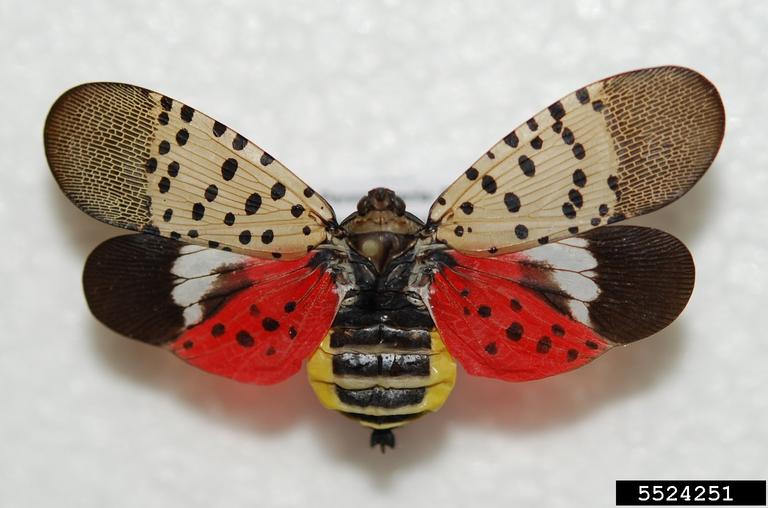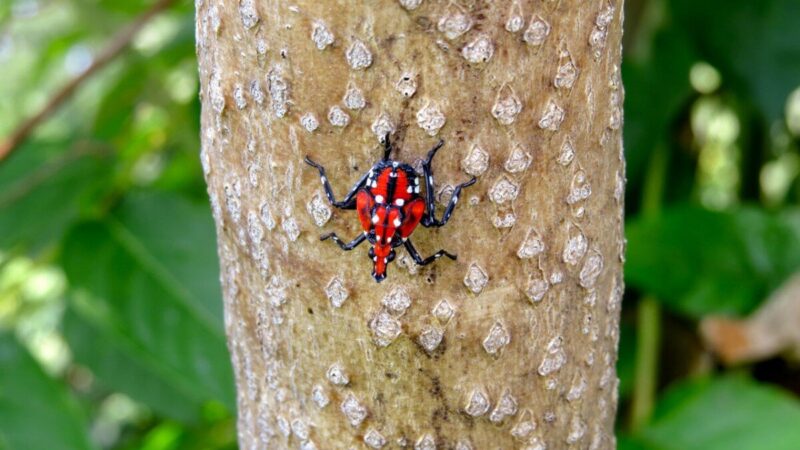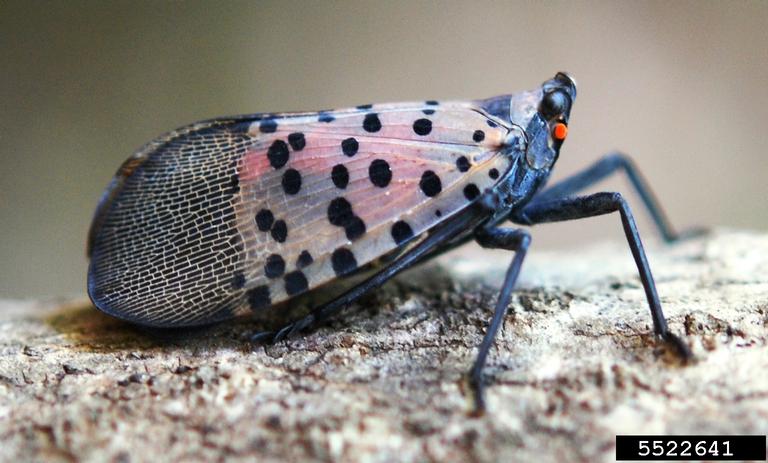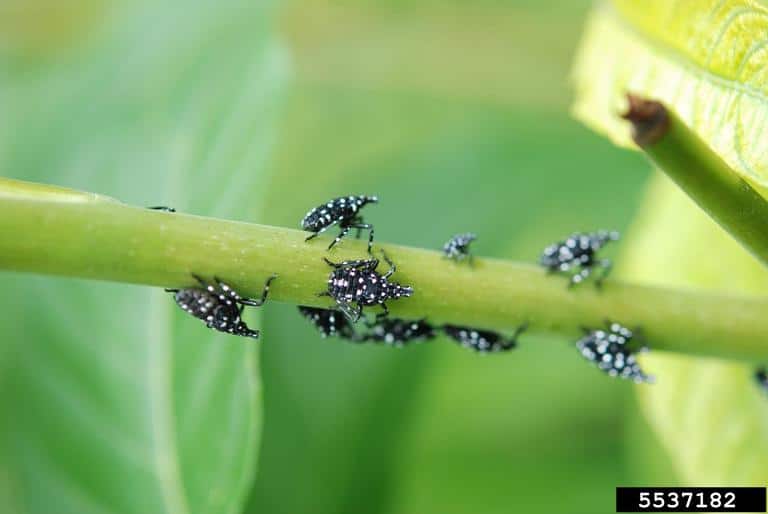
Adults are about 2.5 cm (1 inch) in length. The forewings are light brown with black spots. The hind wings are mainly red with black spots. The red color is especially noticeable when the insect flies. Adults can be found as early as July, and they will remain active until the first hard frost of the year, usually in November. The females begin laying eggs in October and conclude their egg laying by the first frost in November. (Photograph by Lawrence Barringer, PA Dept of Agriculture, Bugwood.org.
The Maryland Department of Agriculture today expanded its spotted lanternfly quarantine to include the following counties: Allegany, Anne Arundel, Baltimore, Calvert, Caroline, Carroll, Cecil, Frederick, Harford, Howard, Kent, Montgomery, Prince George’s, Queen Anne’s, Talbot, Washington and Wicomico, as well as Baltimore City.
This quarantine is effective immediately, and restricts the movement of regulated articles that might contain the spotted lanternfly in any of its life stages, including egg masses, nymphs, and adults.
“The spotted lanternfly continues to be a destructive invasive species that has negatively impacted agriculture operations throughout the mid-Atlantic region,” said MDA Secretary Kevin Atticks. “The department continues to take steps to expand the quarantine zone out of an abundance of caution as we remain vigilant in controlling the spread of this destructive insect.”
The original quarantine order from 2019 included Cecil and Harford counties, which have established spotted lanternfly populations. In early 2022 the quarantine zone was expanded to nine additional jurisdictions based on the confirmed existence of known spotted lanternfly populations in these areas.
A map of the new quarantine zone is available below.
Businesses, municipalities, and government agencies that require the movement of any regulated item within or from the quarantine zone must have a specialized permit. The permit may be obtained by taking a free online training course and exam through PennState Extension. Examples of regulated articles include landscaping, remodeling, or construction waste; packing materials like wood boxes or crates; plants and plant parts; vehicles; and other outdoor items.
Managers, supervisors, or employees of a business or organization operating in the quarantine zone must receive the approved training and pass the exam to demonstrate a working knowledge and understanding of pest and quarantine requirements. Training of other employees, inspection of vehicles and products, and removal of living stages of spotted lanternfly must also be completed.
All spotted lanternfly permits for Maryland, Virginia, Pennsylvania, New Jersey, and Delaware are transferable and valid throughout the region.
The spotted lanternfly poses a major threat to the region’s agricultural industries as it feeds on over 70 different types of crops and plants, including grapes, hops, apples, peaches, oak, pine, and many others.
Originally from Asia, the spotted lanternfly was first detected in Berks County, Pennsylvania in fall 2014. As a known hitchhiker, the spotted lanternfly has also spread to Connecticut, Delaware, Indiana, New Jersey, New York, Ohio, Virginia and West Virginia.
Other informational materials are available on the program’s website.
Damage: Nymphs and adults feed on plants, using their piercing mouthparts to suck sap from trunks and stems. This has been shown to cause stunted growth, localized damage, and reduced yields.
Additionally, as SLF feeds, it excretes a sugary substance called honeydew. Honeydew is attractive to ants, wasps, and bees. Honeydew can develop an intense, rotten odor as it ferments. It is also readily colonized by black, sooty mold which can cover leaves and inhibit photosynthesis. Sooty mold can also cover manmade structures and can be difficult to remove.
It should be noted that although SLF have been found on crops such as corn, soybeans, and alfalfa, they haven’t been observed feeding on these plants.
Although SLF can be present in large numbers on host plants, SLF are not typically associated with host mortality. SLF is considered a stressor that may contribute to the decline of its host. The exception to this is grapes, which can suffer greatly reduced winter hardiness as a result of SLF feeding. It remains to be seen what effect lanternfly feeding will have on Maryland’s vinyards.

Adults are about 2.5 cm (1 inch) in length. The forewings are light brown with black spots. The hind wings are mainly red with black spots. The red color is especially noticeable when the insect flies. Adults can be found as early as July, and they will remain active until the first hard frost of the year, usually in November. The females begin laying eggs in October and conclude their egg laying by the first frost in November. (Photograph by Lawrence Barringer, PA Dept of Agriculture, Bugwood.org.

4th instar nymphs can be found starting in June. They molt from the early instars and are distinctive because of their red coloration. (Photograph taken by Alejandro Calixto, NYSIPM

(Photograph by Lawrence Barringer, PA Dept of Agriculture, Bugwood.org.

Early instar nymphs hatch in the first week of May. The early instar nymphs are very small. They will grow larger through July when they molt into the 4th instar. (Photograph by Lawrence Barringer, PA Dept of Agriculture, Bugwood.org.


